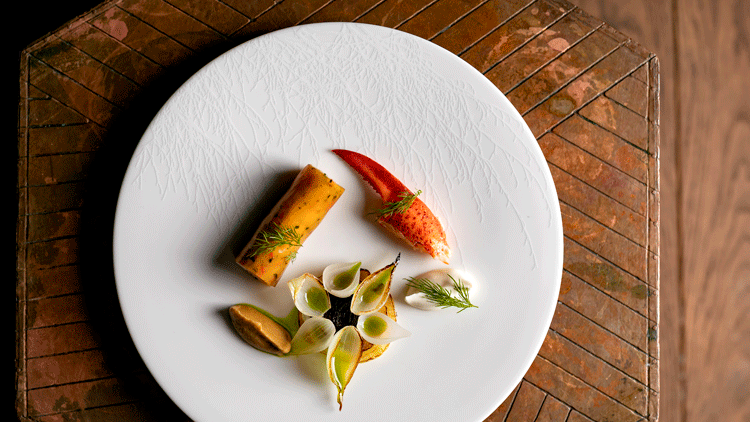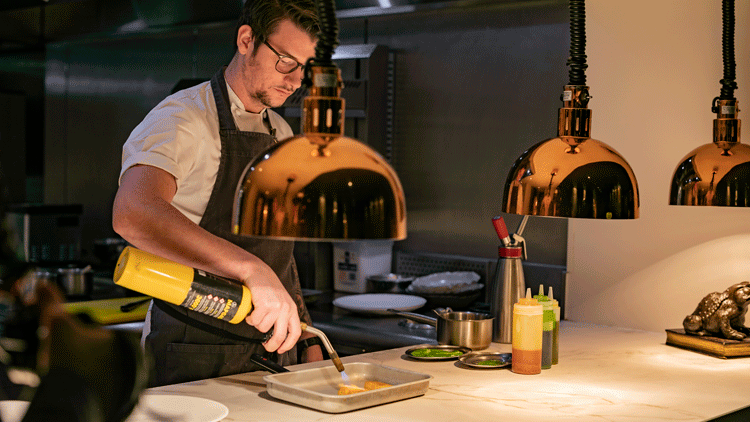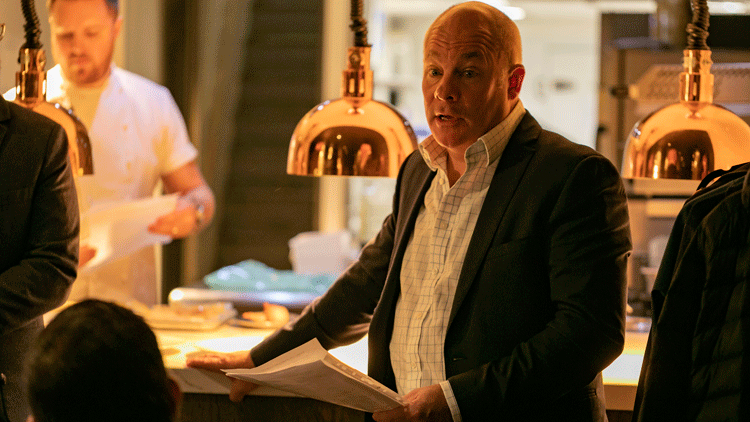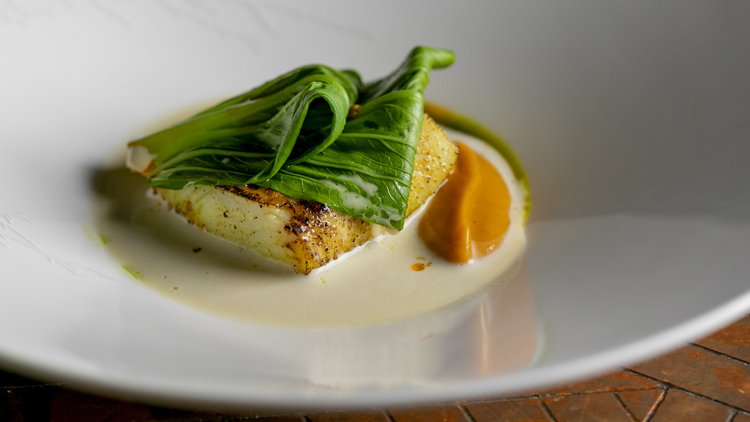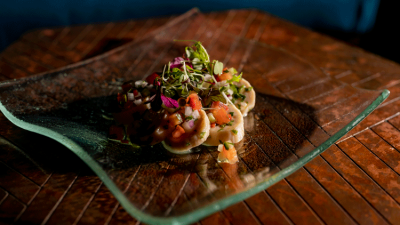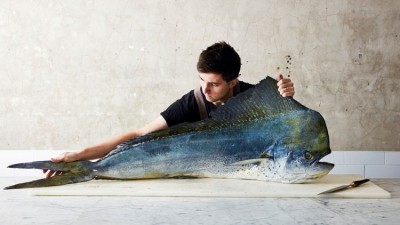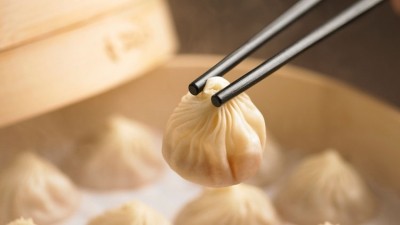Promoted content
A fishful of dollars: How to make seafood work for you
The restaurant industry used to be in quite a tangle about fish but has upped its game recently, with most chefs responsible for purchasing seafood well informed when it comes to sustainability and having a good understanding of how it needs to be prepared and cooked.
But it never hurts to brush up, and with this in mind global seafood supplier Royal Greenland invited a group of senior chefs and purchasing specialists to Adam Handling’s Frog restaurant in Covent Garden for an in-depth discussion on purchasing seafood with two cooking masterclasses that showed chefs how to make the most of Royal Greenland products.
Round the table were representatives from groups including Hakkasan, Loch Fyne, Burger & Lobster, Las Iguanas, Sushisamba, Wright Brothers, Ottolenghi, Seafood Pub Company, San Carlo and Wonderland Restaurants.
Steven Edwards – chef-patron at Hove restaurant Etch – demoed two dishes that showcased his highly focused cooking style (his creations typically only feature two main ingredients). First up was Royal Greenland snow crab bound in herb mayonnaise and served alongside a Royal Greenland Newfoundland lobster meat claw.
Edwards used the crab and lobster shells to make a pliable veg-based gel, which he wrapped around the crab mayonnaise before garnishing his plate with roasted and pickled onions, onion puree and dill oil. “I found the snow crab easy to prep because it was quite soft. It was just a case of cutting open the legs with scissors and then removing the thin layer of cartilage in the middle,” he says. “The gel is tasty and a good way of making the crab mayonnaise a bit neater on the plate. You could use other setting agents but I find that a veg-based gel is easier to roll.”
Steven Edwards' snow crab and lobster dish
His second dish was made with Royal Greenland Greenland halibut. “Halibut is a great fish and it’s also underutilised by chefs,” he says. “We brine and salt all the fish we work with at Etch.”
For this dish, Edwards vacuum-packed the brined fish with some beurre noisette and cooked it at 47°C for eight minutes.
“You have to treat halibut quite differently to a lot of other fish as it can go dry quite quickly,” he adds. “You don’t want to overcook it. You also need to watch the skin as it can go a bit tough. I often cook it with the skin on and then take it off before I put it on the plate.”
Edwards finished his halibut with a blowtorch to give it a smoky flavour before serving it with celeriac puree and brick pastry filled with the halibut’s trim. “It’s a bit like a spring roll. We often use brick pastry to wrap our offcuts at Etch, it’s a good way of making them look more elegant. They are very simple to make and easy during service, they take about two minutes in the fryer,” he adds.
Adam Handling also cooked Royal Greenland Greenland halibut, pairing it with a foaming lemongrass sauce, pak choi and carrot puree. Like Edwards, Handling cures his fish prior to cooking it. “The main issue I see in other restaurants is that chefs don’t cure their fish. There is nothing not to like about it. It seasons it, takes out all the impurities and makes it much easier to cook because it removes excess water.”
Handling cooked his halibut using only a blow torch. “I love flame-grilled food, it’s much better than pan frying because you get smokiness. With this technique you need to be patient because you have to let the heat penetrate the fish. I cover it with butter that I’ve clarified so as not to burn the milk proteins. This helps keep the fish moist,” says Handling, who has just opened a restaurant in Chelsea called Ugly Butterfly that uses ‘waste’ products from his more top-end restaurants. The less glamorous parts of fish and shellfish make a regular appearance on the menu, with his new place using the salted trim from halibut in its fish cakes and the innards of lobster in one of its dressings.
Adam Handling blowtorches his halibut
“My flagship restaurant (Adam Handling Chelsea) is £50 a main course. For that sort of price my customers expect precision, and that means more wastage than I want. But we now have a solution in Ugly Butterfly.”
There’s been a lot of talk in the industry over the past few months about making better use of the fish and shellfish we take out of the sea. Australian chef Josh Niland has thrown the spotlight on the issue, questioning why chefs don’t apply the nose-to-tail philosophy they apply to land animals to marine life in his recently published The Whole Fish book.
“I’m Mediterranean and it’s quite normal to eat the whole fish there,” says Sushisamba’s Andreas Bollanos. “Education is important. In some places the salmon belly is prized because it’s so delicious, but it’s often viewed as a waste product here. It’s our job to get that idea out there, but you can only push it so much.”
Hakkasan executive chef Andrew Yeo says that his restaurants are to some extent constrained by their premium positioning. “In Asian restaurants fish is often consumed whole and nearly every bit would be eaten. However, we are a Michelin-starred operation so our food needs to be more refined. Our guests generally don’t want to see bones.”
“It’s tricky. It’s a nice idea but we find that nearly all our customers want the fillets and don’t have the time to breakdown the whole fish in house. The by-product is not wasted, it just goes to different bits of the industry,” says Royal Greenland managing director Randall Jennings.
Royal Greenland managing director Randall Jennings
Getting chefs to try new species appears to be easier than getting them to explore the grizzlier bits. As consumers become more aware of sustainability, chefs have had to make sure that what they are offering stacks up, and that often means experimenting with less obvious species.
“But even in a specialist seafood place it can still be challenging to get customers to try new things,” says Loch Fyne executive chef Chris Gibson. “We need to pay a lot of attention to how we put the dish together. You need to be tuned in to what people are looking for. It can be a bit of a punt because great fish isn’t cheap.”
The procurement of sustainable seafood can be tricky, particularly for larger groups that rely on high volumes. “We have specific criteria for each product: we need to know exactly where it comes from, who we are getting it from and how it has been fished or, in the case of aquaculture, how it has been produced,” says Hakkasan procurement director Christie Jones. “We rely heavily on the various standards out there.”
Adam Handling's Royal Greenland Greenland halibut dish
Randall believes it is in the seafood industry’s best interests to ensure what they take out of the water and sell is sustainable. “In Greenland, people want the stocks to still be around for their kids and their grandchildren. It’s one of a handful of sources of income there. We’ve just taken delivery of two new trawlers and each has a room inside that monitors everything the trawler does. They take it extremely seriously and are constantly monitoring the stocks.”
As someone behind the food at one of the larger groups, Las Iguanas development chef Glenn Evans looks to source seafood that’s cost effective and easy for his staff to handle. “Our skill level is not as high as some of the people around this table,” he says. “Brining and sous vide is key for us now, it’s opened a lot of things up. In general, we’re looking for seafood that’s good at carrying our punchy flavours and that has a lot of tolerance when it comes to cooking.”
In common with many other casual dining businesses, Las Iguanas uses frozen seafood exclusively. “It’s more manageable and cost effective. We work in six-month menu cycles. It’s essential that the product is constantly available,” says Evans.
“The assumption always has been that fresh is best,” says Randall. “But we’ve done work with chefs and found that frozen works better.
“In fact, we got nearly all of them to switch. It tasted better, the texture was better, it was cheaper and there was less waste. Fresh cod can often be five or six days old before it lands on people’s plates.”
About Royal Greenland
Royal Greenland is a fishing company bringing wild-caught, high-quality seafood from the North Atlantic and the Arctic Ocean to consumers around the globe. Being vertically integrated means it is able to apply the highest food safety standards to all aspects of its business, from catch, processing, packaging and distribution, to product development.
Its mission is to sustainably maximise the value of the North Atlantic marine resources to which it has access, for the benefit of the communities where the business is present, and its owners, the people of Greenland.
In the UK, its office based in Manchester has been servicing the retail, wholesale, catering and restaurant channels for over 30 years with a wide range of innovative and mainstream products: from MSC cold water prawns to snow crab and Newfoundland lobster. It is a dedicated partner to its customers delivering relevant, sustainable seafood products that create value and delight consumers.
Royal Greenland says it is excited about cooking with seafood and developing new ideas, tips, recipes and new flavour combinations, and is happy to share these with other seafood enthusiasts on its online and offline communication platforms – where it promotes the brand.
“We like to think that our product range has something to offer for any chef who cooks seafood,” says a spokesperson for Royal Greenland. “After all, we are closest to the fish, closest to the customer and closest to the consumer.”
